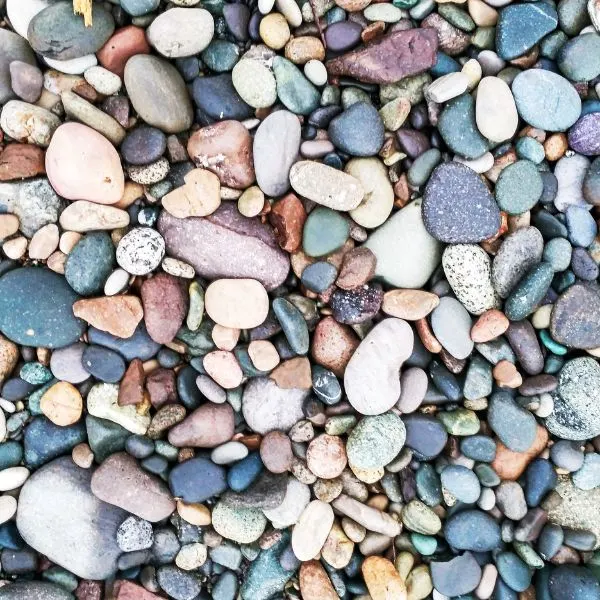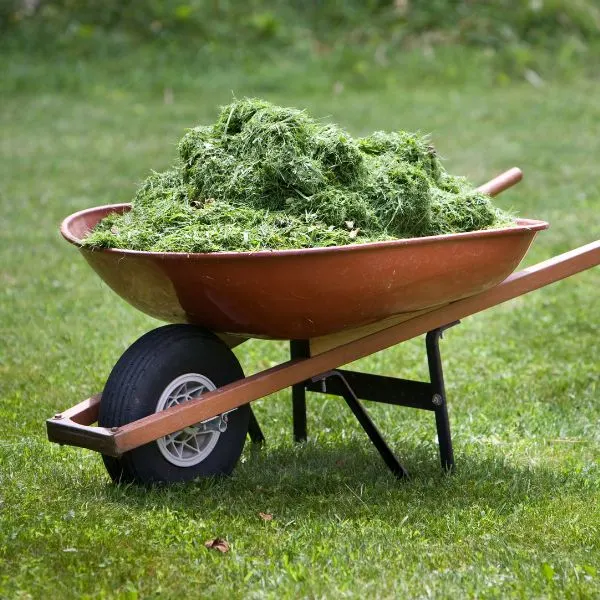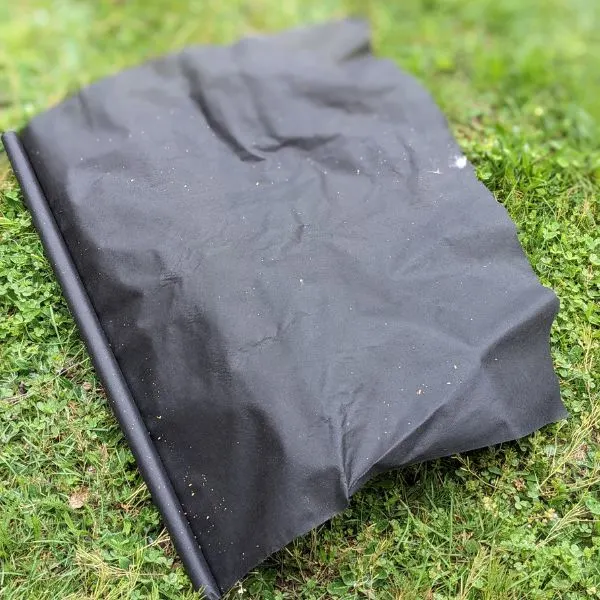The debate of mulch vs rocks is one that will most likely come down to your choice related to design and maintenance.
You can go with lots of mulch to make the landscape more verdant, but that certainly creates its fair share of maintenance. You could go with rock, which provides a timeless grace but nourishes little and adds a few pitfalls for your troubles.
Which one is best?
It’s a little more complicated than just ‘one or the other’. Each landscape is different, with its own natural perks and caveats, so to answer this question we’re going to give you a comprehensive look at the pros and cons of both.
That way, you can factor in the variables of your own location, and it should be much more apparent which strategy (or combination) is going to be the best! Without further ado, we bring you ‘Mulch vs. Rocks: The pros and cons to carefully consider’!
Table of Contents
Mulch Vs Rocks
Mulch is the most important of the pair, however, unless you live in an area where the soil is extremely fertile, but rocks definitely have their place. Close to your home, they can improve drainage, and that same idea can help you to place them strategically on your property to micromanage waterflow.
This gives you that ‘timeless’ look and helps you to prepare when Nature is overly generous with water.
We recommend a combination of both, so that the controlled water flow and the nourishing benefits of mulch work in harmony to make your landscape verdant and also to impart the feel of ‘permanence’ in how it is displayed. It’s a lot of work, but it’s worth it!
The Main Differences Between Mulch and Rocks
- Mulch protects plants from cold and heat, while rock protects from cold but can increase temperature on a sunny day.
- Rocks add beauty and lasts virtually forever, while mulch can add beauty but must be replaced regularly.
- Rocks are easier to clean, while mulch beds are much more difficult in this regard.
- Mulch nourishes the soil, most rocks do not (excepting igneous varieties)
- Rocks are more expensive initially than mulch, although you can create or obtain either with a hefty investment of time.
These are just some initial points to get you started, but this subject deserves a much more granular look. With that said, let’s go directly into the pros and cons of each landscaping option so that you’ll get a better idea of the big picture where your own environment is concerned.
Key features: Mulch

Mulch is an absolute must in your environment, as soil nutrients may replenish too slowly without it. Boiling the key features into an at-a-glance reference, we get a little something like this:
- Mulch helps to keep soil nutrient-rich all year round.
- When finely ground and textured, a layer of mulch can minimize weed growth.
- Evaporation factors are minimized with the application of mulch – more water is retained and so less watering is required.
- Mulch provides temperature control – the insulating layer keeps plants warmer in the winter, and cooler in the summer.
Now let’s look at a comprehensive list of the pros and cons of Mulch. You’ll see some repeats from the key features, so that each list is as close to complete as we can make it.
Pros
- Mulch breaks down into nutrients to keep your soil fertile and fresh.
- Less watering is required as mulch increases water-retention and reduces evaporative loss factors.
- Mulch is aesthetically pleasing.
- Temperature control helps to keep less hardy plants alive that would otherwise die.
- Weeds are reduced with more granular textures of mulch.
- Mulch-fortified soil is at less risk of erosion over time.
- Gardens and trees receive enormous benefits from a supportive placement of mulching mediums.
- Inexpensive to implement – numerous DIY options are available if you’re so inclined or simply on a budget.
Cons
- Mulch needs to be replaced yearly and at the right time – too early, and you get later blooming, too late and you might just get weeds!
- Weed seeds often come in batches of mulch and if it is not of a granular texture, they might also grow!
- Mulch needs to be limited to no more than 3 inches in height, otherwise you may smother the area, rather than nourish and protect it. You can also put it close to trees but it should never touch the trunk – it can contribute to or hide decay if it’s not at least 12 inches away.
- Bugs like to hide in mulch, but some types like cypress or cedar will be resistant to this. You must weigh your options, however, as insects naturally help to break mulch down, too.
- Cleanup is more time consuming with a mulch bed.
- This is a regular expense to add to your bottom line, unless DIY options are implemented (and that still costs time).
Key features: Rocks

Nothing quite looks so ‘classic’ and the strategic placement of rocks. They provide beauty and a solid sense of permanence that you can enjoy year after year. Their key features include the following:
- Familiar rocks that you’ve admired and carefully placed can be enjoyed for generations.
- Rocks add superior drainage – they can keep paths from flooding, steer water away from your house, and highlight or encircle gardens and groves for a polished look with an antique grace.
- They can keep soil erosion at bay and even hold their space on difficult, sloping terrains.
- Rocks can heat up and this will affect plant growth if they are too close
- Without a fabric weed barrier, Rocks are excellent hosts for weeds.
- They’re heavy and you’ll be very aware of that when you have to work with or around them.
While these are the key points, let’s go comprehensive with the pros and the cons like we did with the mulch to help narrow down your decisions.
Pros
- Mulch comes and goes, but rocks are pretty much forever. As an aesthetic choice, this is one that you’ll enjoy and that your great grandkids may even appreciate someday.
- Placed carefully, rocks provide a natural drainage option for flat or hilly areas that can help you to control water flow to a reasonable extent. This can prevent flooding, pooling, and insect-friendly stagnation scenarios.
- Rocks don’t attract insects.
- Igneous rocks can provide minerals to your soil.
- Carefully-placed rocks that highlight natural assets can and do increase property values.
- Cleanup is a breeze – spray them shiny and pluck out the occasional weed.
- Rocks help to protect from flooding, cold, and freezing.
- Once collected, purchased, or both, they cost almost nothing to maintain.
Cons
- Upfront expense is appreciably more – this is an option you might have to build up slowly unless your terrain has a stream or river nearby and even then, that costs you time.
- Rocks – barring igneous options – don’t add any nutrients to your gardens or groves.
- Some rocks can heat in the sun, damaging plants in the process if they are too close.
- Even with a fabric barrier, some weeds will find a way to thrive and you’ll have to move heavy rocks to deal with them.
- Depending on the type of stone, rocks can add a little chaos to your pH balance if you’re not careful.
- You can ‘fence in’ a garden, but otherwise they aren’t beneficial for gardens or for your annuals.
- Once placed, it’s a big job if you decide to relocate them, so give yourself a lot of time to consider exactly where you want them to stay.
Other Alternatives
In the ‘mulch vs. rocks’ argument things really aren’t so binary. You can use either or both, as you like, and there are certainly alternatives that you could go with or use as a supportive framework for a combination of choices. Let’s look at those alternatives so that you can implement them into a more customized strategy for your landscaping needs!
Leaves

Leaves are free and come autumn, in most locations you’ll have a goodly supply of them. So, what do they bring to the table? Well, for one thing, leaves are the ‘natural’ mulch alternative that Nature has been using since… Well, forever! They add nutrients to the soil and you won’t have to worry about them being too close to your trees – they’re supposed to be.
You DO have to pick out any that look diseased but after that, you can collect them with a leaf mulcher and you’ve got a free mulching option that arrives at the perfect time and won’t cost you more than the machinery (automated or by hand) investment that you’ll need for taking advantage of this bounty.
Compost

While it’s smelly, if you have a composting bin nearby then you’ve got a DIY mulching option that you can also use to supercharge mulch if you like. It takes a lot of time, but for folks who like to live ‘off the grid’ it also provides you with a way to process biodegradable waste in a way that’s beneficial for your plants.
It’s not the most aesthetically-pleasing, but it’s practical and highly effective, so at the very least some judicial use is an excellent strategy for keeping your carefully-cultivated landscape green in more than one way!
It’s also free other than the time it takes to prepare and to distribute it and that never hurts, either!
Rubber

While it’s not biodegradable, 100% recycler rubber is reusable and provides a fantastic alternative to wood mulches. Since it doesn’t decompose, you’ll get reduced fungal growth and it’s not going to do local weeds any favors. The weight of it also means that it’s not going to blow away easily and it will help to create a more direct conduit for water, while providing superior insulation.
Just be careful when you purchase it, as some rubber will contain chemicals that you’ll definitely want to keep out of the yard!
Grass

As long as you haven’t been treating it with pesticides, grass clippings from regular mowing make an excellent basic mulch that can help to increase the absorption of nitrogen wherever you deign to place it. You do need to be quick about it – while you can still use brown grass, you’ll need to put that on top so that the greener layers make up the base.
As such, immediate collection and placement is the best habit to get into if you decide to go with grass.
Landscaping fabric

While it can be a little pricey and it’s not so good-looking, landscape fabrics can help to keep insects and weeds at bay, and they are permeable where water and air are concerned. That said, you’ll want to use it sparingly — it can also prevent a healthy cultivation of earthworms and it needs to be shielded from the worst of the weather or it can be easily damaged.
Pine needles

Pine needles look great and smell amazing, and spread over a garden or your lawn, they provide a nice layer of insulation that won’t prevent air or water from reaching your plants. That said, they WILL increase the acidity in an area, so you’ll have to consider your placement carefully to avoid any problems.
FAQ
Before we conclude, we’d like to touch on a few frequently asked questions that we receive from time to time in order to help you finalize your decision. Let’s take a look!
Do rocks and mulch attract snakes?
Mulch and larger rocks can be a bit of a problem, as you may inadvertently create snake dens without a strategy to avoid this. The easiest way to do so is to use smaller river rocks, fitted tightly, and gravel can help to fill in spaces that might otherwise be sufficient for those flexible snakes.
Landscaping fabric can also work a treat here, if there are some large rocks that you’d like to have, but whatever solution you go with you’ll want to make sure that you keep the possibility of snakes in mind.
Is it good to put rocks around your house?
Yes, rocks around your foundation are a great idea. They can help to steer the waterflow, while also preventing pooling and reducing the chance of any basement flooding due to inclement weather.
Gravel paths nearby are also a great option if you get a lot of mud after rains. If the territory won’t allow for a gravel-only option, sometimes you can lay a stretch of tarp and weigh it down with rocks for a low-maintenance solution that gives you clean pathways and helps to steer water away from the house.
Should I put mulch or rock around trees?
Mulch is the better choice, as long as it’s spaced at least 12 inches from the tree – you never want it touching the trunk. While rocks might look good in front or around a tree, they must be placed very carefully.
If they are too close then they’re basically only decorative – they won’t do any good for the health of the tree and might even be detrimental if they heat up on a hot summer’s day.
Aside from this, they’ll make mowing difficult around those trees, so try to stick to just using mulch around your trees – it’s nurturing, easy to work with, and it won’t destroy your lawn mower blades if you accidentally run over it.
Why can’t mulch be too close to trees?
If mulch is too close to trees or applied too thickly, then it can become problematic for the following reasons. First, if it’s too close to the trunk, then you’re cultivating insects there and making it easier for fungus and other conditions to afflict the tree.
If it’s too thick, say at the root ball, then the roots of the tree may seek out those nutrients and actually grow INTO the mulch. This can produce girdling roots, which can ‘choke off’ the nutrient and water flow for the roots and branches, potentially killing your tree. Mulch can be used to excellent beneficial effects, but you need to make sure that it’s not too close to root balls or the trunk of your tree.
Give it a foot of space at the very least and you should be able to enjoy the benefits without the risks we’ve outlined.
What is the best mulch around trees?
Professional Landscapers typically prefer options such as pine, compost, barks, leaves, and cocoa hulls, but this is a customized solution so you’ll want to research a little if you want to employ these mulches on your own.
The important factors to consider are pH changes that may result (such as pine needle acidity), as well as decomposition time to determine replacement intervals.
What is the best rock to put around trees?
There ARE scenarios where you can use rocks around trees but they must be carefully cultivated to avoid any caveats. A layered stonework is the best approach, as it can highlight the base of the tree quite nicely and if done right, helps also to protect the roots.
Good stones to go with include options such as quartz, brick, river rocks, and granite.
In Conclusion
That about wraps it up for this mulch vs rocks comparison, customizing your home or business landscape should hopefully be a little easier. As far as choosing one of the other, if you had to pick only one, then mulching would be the way to go. While it must be replaced periodically, it will keep your lawn, gardens, and groves both healthy and protected from the elements.
That said, even if it’s a little cost prohibitive, you should consider adding rocks over time as your budget allows. Options such as igneous rock can add to your overall nutrient production and let’s face it – nothing beats the look.
With careful planning, you’ll have a fine-looking landscape where the nutrients are plenty and your water flow is controlled. While it might take years, it’s worth every penny and minute of time that you invest in it.
After all, nothing makes a house a home quite like an enchanting landscape!
More gardening stuff

Sage
Tuesday 9th of January 2024
This advice is so helpful! We're redoing our backyard and trying to decide if we want mulch or something else between our lawn and fence. I will definitely save this post for later when we're closer to making a decision. Thanks for sharing!